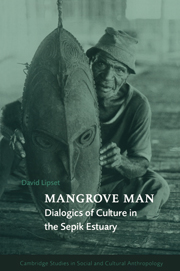Book contents
- Frontmatter
- Contents
- List of illustrations
- List of tables
- Acknowledgments
- 1 Introduction
- PART I DIALOGICS OF THE MATERNAL SCHEMA AND THE UTERINE BODY
- 2 A predicament in space
- 3 The maternal schema and the uterine body
- 4 The heraldic body
- 5 Who succeeded Ginau?
- PART II DIALOGICS OF THE MATERNAL SCHEMA AND THE COSMIC BODY OF MAN
- PART III DIALOGICS OF THE MATERNAL SCHEMA IN SOCIAL CONTROL
- Glossary
- Notes
- References
- Index
- Cambridge Studies in Social and Cultural Anthropology
3 - The maternal schema and the uterine body
Published online by Cambridge University Press: 05 June 2012
- Frontmatter
- Contents
- List of illustrations
- List of tables
- Acknowledgments
- 1 Introduction
- PART I DIALOGICS OF THE MATERNAL SCHEMA AND THE UTERINE BODY
- 2 A predicament in space
- 3 The maternal schema and the uterine body
- 4 The heraldic body
- 5 Who succeeded Ginau?
- PART II DIALOGICS OF THE MATERNAL SCHEMA AND THE COSMIC BODY OF MAN
- PART III DIALOGICS OF THE MATERNAL SCHEMA IN SOCIAL CONTROL
- Glossary
- Notes
- References
- Index
- Cambridge Studies in Social and Cultural Anthropology
Summary
It should be apparent that the Murik adaptive strategy suspends the society in an elaborate web of regional trade relationships. Less apparent may be that, except for the provincial market, the right to implement these relationships was and remains a hereditary privilege. Expanding the range of kinship therefore expands an actor's potential access to imported resources (see also Pomponio 1992: 100). Less apparent is also that Murik assumptions about kinship constitute an argument for and against the role of the uterine, maternal body in the reproduction of society. If we attend to how kinship is understood, further dimensions of this argument can be heard. Rather than an attack by a collective, masculine body against women, as is often the case in Melanesian cultures, this is a struggle to honor the custodial, or pre-Oedipal, mother, “who” is personified by both women and men, and to contain an image of an interiorized, uterine body, “who” is also personified by both genders. This chapter examines evidence that such an androgynous dialogue is going on in the contexts of reproduction beliefs, siblingship and the norms of affinal relationships.
The “bat mother”
Of all the views of reproduction that have been reported in the Sepik region, perhaps those of the Arapesh present the most informative contrast to the Murik case. According to both, conception and birth are held to be saturated in feminine blood, which fluid is feared to contaminate the masculine body and agency.
- Type
- Chapter
- Information
- Mangrove ManDialogics of Culture in the Sepik Estuary, pp. 53 - 78Publisher: Cambridge University PressPrint publication year: 1997

